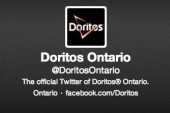
Since the inception of Facebook in 2004, social media has quickly become the name of the game. And not just as a means to share important life moments with our nearest and dearest– it’s also where many people get their news, where businesses learn what people want or are saying about their products, and even as a tool to help people lose weight. But where is social media going from here? Google launched their own social media network with Google+, but for the most part it hasn’t really caught on, despite having about the same number of users as Facebook. (That’s not to say it won’t, given the number of privacy gaffes Facebook has had recently, especially since they went public.) Despite the Facebook/Twitter juggernaut, there are still a lot of folks trying to be the next big thing in social media. But most of the new kids on the block are doing the smart thing and, instead of trying to be the next Facebook, they’re piggybacking off of existing social media platforms to deliver an experience that they lack. Here are some applications to watch out for.
Banjo is a location-based social media app that aggregates all of your social networks into one feed, so you don’t miss a thing with your favourite people (or even miss them in person, since it tells you where they are in real time, provided they use Foursquare). It also makes it easier to find everything and eliminates the need for multiple apps on your phone. Local news stations even used it during the last U.S. election as a way to gather data on who people were voting for instead of waiting on pollsters. Banjo surpassed 1 million users in just 9 months.
Serendip is a music-sharing social network. It uses Facebook and Twitter to find your existing friends who share music and also helps you find new friends who have similar taste in music to your own. It then creates a playlist based on what your friends are sharing. It also recommends new music based on what you’ve already liked, and provides a fully-customized music experience. It’s a definite must for people who love music or delight in hearing the latest band first.
LifeKraze is described as the social network “for what you do.” What that means is, you post short status messages about what activities you did that day; for example, if you went for a walk or skipped the junk food aisle or cooked a healthy meal. But that’s not all you do. Each user gets 300 points to allocate amongst their friends as a reward for their achievement. So if someone does something that you think is really awesome, you give them 50 points. Users can then use their points to buy items from sponsors like The North Face and Skullcandy. You can also give high fives and motivate people to achieve their goals. It has a large focus on fitness, health, and weight loss, but it can be used for any kind of goal. It’s the Kelly Ripa of social networks, basically.
FamilyLeaf launched last spring, and billed itself as kind of an anti-Facebook — a private network specifically for your family, not friends, or friends of friends, or those people you meet once and they somehow manage to find and add you. It has no advertising, and doesn’t share information with people outside your network like on Facebook. It allows you to share with your family the aspects or your life that you want to share, while keeping other parts that you might not want your family to know about out.
Just.me isn’t exactly a social network, and is so new that it’s currently only in iPhone open beta, but it bears talking about because it might be a form that social networks take in the future. Just.me is a mobile messaging application that acts as email, SMS, and MMS. But it’s also a public broadcasting app like Twitter, and a personal cloud-stored journal, kind of like Evernote, and it allows you to share all kinds of media without having to install outside applications. It only has three tabs —“only me,” “shared,” and “public.” The “only me” tab allows you to email a user, and it just stays between you. “Shared” allows you to start one on one or group messaging threads, and “public” is like Twitter, where you share updates with everyone. Its main strength is obviously the degrees of privacy it allows that aren’t always there with a traditional social network, and as more people become concerned with social media privacy, that’s something that a lot of people will find very desirable.
____
Megan Patterson is the Science and Technology Editor at Paper Droids and currently a Toronto Standard intern. She has also written for WORN Fashion Journal, Elevate, and Salon Magazines. She also tweets more than is healthy or wise.
For more, follow us on Twitter at @torontostandard and subscribe to our Newsletter.














